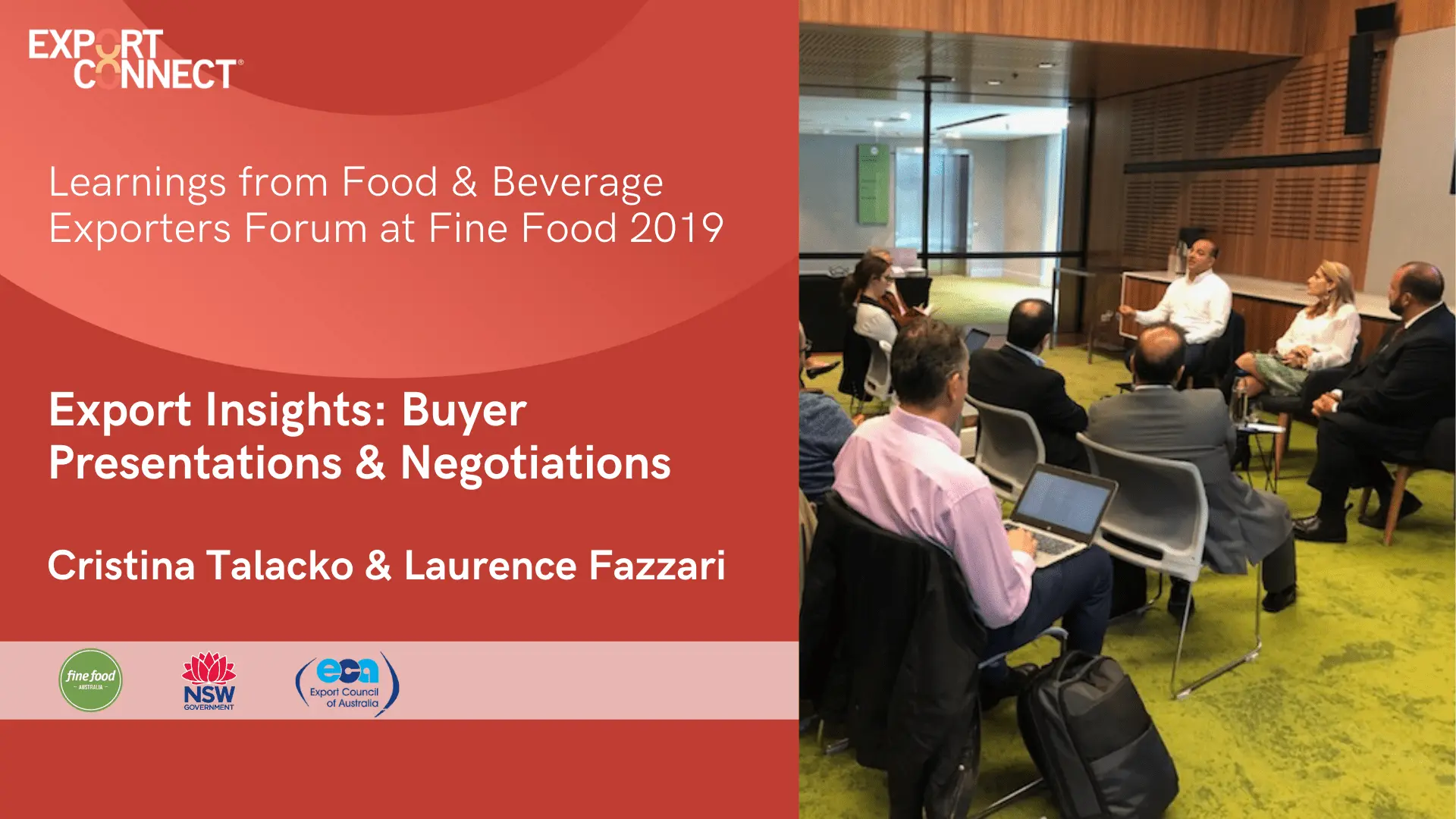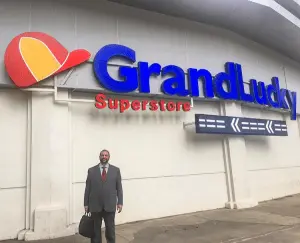Export Connect recently hosted two Food & Beverage Exporters forums at Fine Food Australia in Sydney. Moderated by Najib Lawand, the forums showcased two panels that included successful export managers including Laurence Fazzari from McCains Australia, Kim Brown from Carman’s Fine Foods, David Malone from Simplot and Cristina Talacko from SalDoce, NSW Food & Agribusiness exporter of the year (2018). In this blog, we share insights discussed by Laurence and Cristina on topics including buyer presentations & negotiations. The next blog will cover their views on market opportunities. And future blogs will include insights shared by Kim and David on market selection and entry strategies and building a business case for export.
Create a personal connection
Human connections are what makes the world go round, and it is no different in the export business.Before meeting face to face, Cristina likes to build a rapport, making contact online via sites such as LinkedIn. She advised us not just to be aware of cultural nuances, but to research them – find out basic elements of courtesy like how to address someone, and not to disregard social niceties in the rush to get to the business point. It’s really useful for a business to visit the country in advance, in order to show knowledge of the market and prove that the interest in exporting is genuine.
Another way Cristina builds up a connection is to tell the buyer about her business and its success story. Showing that a business is successful in Australia is crucial to building confidence that it will be a successful exporter.
Articulating your selling point
A business’s selling point in a new market is what makes it unique and causes it to stand out from competitors. And that’s not always the product. A business brings added value in activation plans, marketing or details like minimum order quantities.
Laurence and Cristina both agreed that serviceability is crucial to successful deals. Laurence pointed out that a great product can’t break a market if the business behind it isn’t ready in terms of capability, command of details like ingredients, or market regulations and certifications. Being prepared and ready to go is in itself a selling point.
For marketing, Cristina likes to draw up a six-month plan for buyers showing how her company can complete campaigns, provide in-store demonstrations and drive social media activity. Again, being able to show success in an existing market helps build confidence that a company can deliver.
Making your pitch
I was curious as to how our panellists saw the “elevator pitch” – is it important for businesses to be able to pitch their product and package in a few sentences, or can they rely on having more leisurely conversations.
Laurence felt a good elevator pitch was imperative in scenarios like trade shows where time is of the essence, and companies might need to pitch their products in as little as 30 seconds. However, both experts stressed the importance of listening rather than just talking, with Laurence suggesting two thirds of the pitch time should be focused on finding out who the buyer is and what they are looking for. Cristina actually flips the pitch concept round, letting the buyers talk first so she can tailor her pitch to what they need – information about the product or details of the business side. Finding the balance between giving and receiving information is key.
What is the ideal outcome of a pitch? It’s easy to tell people about a product, but where should that conversation lead? Laurence cautioned that its crucial to end a conversation with some clear next steps. Don’t just sell the product, but listen to what the customer is saying and define what their and your next steps are in advancing future contact.
Making the deal
Once a business has met with a potential buyer or distributor, how quickly do the orders come in? I asked our experts if they’ve ever had orders from the first meeting, or if it is a slower process requiring lots of conversations.
Laurence pointed out that a lot also depends on our own approach, with targeting of suitable buyers much more likely to be successful than general canvassing. He reminded us of the importance of establishing credentials as a reliable business with longevity. Buyers are shrewd, and in purchasing our products they are making an investment of time and money. It goes back to Cristina’s earlier point about selling not just a product, but the business as successful and experienced.
Cristina also highlighted a common trap for first-time exporters – don’t be desperate! No business should be making a deal just because someone is interested. Instead, it’s important to take the time to check out their coverage and whether it matches what the product needs. Cristina gave the example of a niche product, with a distributor promising to get it on the shelf of a massive supermarket. Sounds great, but is it actually the best match for breaking that product into its target market?
Hopefully you’ve found this article useful to understand how export professionals approach buyer presentations and negotiations. As always, if you’ve got any questions or want to discuss export opportunities for your company, feel free to drop us a line here at Export Connect – we always love to hear from you.



